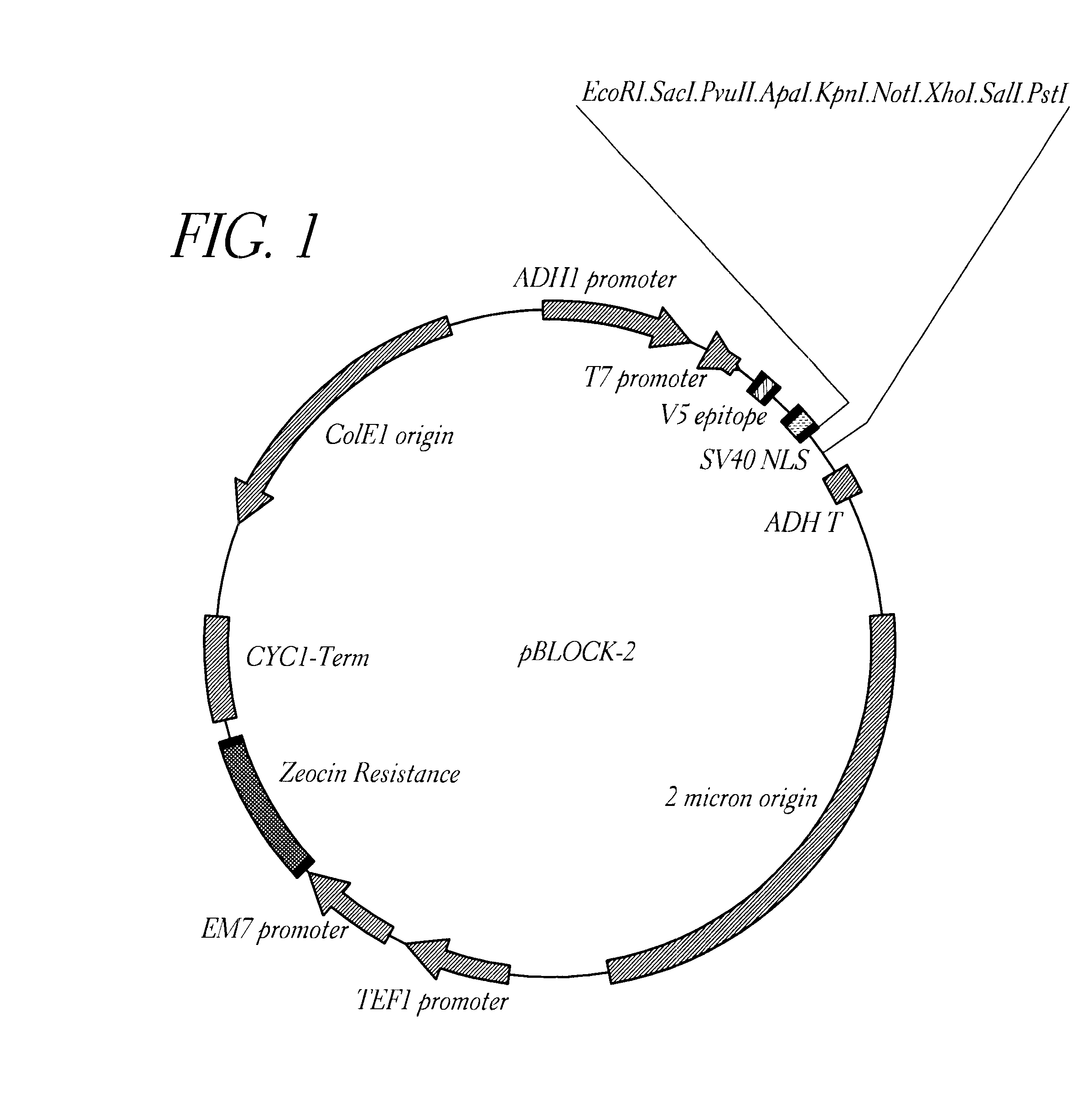Method for detecting proteinaceous inhibitors of protein-protein or DNA-protein interactions
a proteinaceous inhibitor and protein-protein technology, applied in the field of biological interactions, can solve the problems of cell death, inability to detect random peptide libraries in vivo, and enormous potential number of useful amino acid sequences
- Summary
- Abstract
- Description
- Claims
- Application Information
AI Technical Summary
Problems solved by technology
Method used
Image
Examples
example 2
Method for Identifying Inhibitors of Protein-protein Interactions
A counter-selectable reporter gene is introduced into the yeast strain used for the screen. The strain is then modified to allow the introduction of an additional plasmid expressing potential disruptors of the interaction. In one embodiment, the counter-selectable reporter gene URA3 was used to exploit the toxicity of the URA3 gene product in the presence of the drug 5-fluoroorotic acid (5FOA). Any activation of the reporter gene arising from the protein-protein interaction under study is selected against in the presence of the drug 5FOA. Yeast cells expressing peptides from the library which block the interaction will therefore be able to grow in the presence of 5FOA. In an alternative embodiment, a second counterselectable reporter gene, designated CYH2, was utilised to select yeast cells in the presence of cycloheximide. In a further embodiment, the genetic constructs utilised both the URA3 and CYH2 counterselectabl...
example 3
Construction of Peptide Library
Conventional two hybrid libraries are unsuitable for the method of the present invention since, being fused to a transcriptional activation domain, they do not allow the cloning of all kinds of peptide blockers because some members of the library would activate transcription (thereby evading the screen) regardless of whether or not they block the interaction under test. Moreover, as with the vectors used in three hybrid screening (Zhang, J. et al. (1996)), it is necessary to provide an additional selectable marker in the yeast vector and to use an appropriate strain for its selection.
Presenting peptides in a constrained fashion limits the degrees of freedom, and hence the entropic cost, of binding, accounting for the high affinity of interactions observed (Colas et al. (1996)). A Trx-presented random peptide library is used in the present method. The preparation of the random inserts and Trx moiety is as described previously, (Colas et al. (1996)). The...
example 4
Performing the Screen for Peptide Blockers of Protein-protein Interactions
To reduce the number of yeast library transformations, a mass-mating technique to efficiently combine the library plasmids with the strains expressing the two hybrid partners issued (Bendixen, C. (1994)). After selection of diploids, and plating onto media containing 5FOA, only clones expressing blocking peptides (`blockers`) form colonies since they repress the transcription of the counterselectable URA3 reporter gene. The appropriate stringency of the 5FOA negative selection is determined empirically for each interactor pair according to Vidal et al. (1996).
PUM
| Property | Measurement | Unit |
|---|---|---|
| concentration | aaaaa | aaaaa |
| acid | aaaaa | aaaaa |
| nucleic acid | aaaaa | aaaaa |
Abstract
Description
Claims
Application Information
 Login to View More
Login to View More - R&D
- Intellectual Property
- Life Sciences
- Materials
- Tech Scout
- Unparalleled Data Quality
- Higher Quality Content
- 60% Fewer Hallucinations
Browse by: Latest US Patents, China's latest patents, Technical Efficacy Thesaurus, Application Domain, Technology Topic, Popular Technical Reports.
© 2025 PatSnap. All rights reserved.Legal|Privacy policy|Modern Slavery Act Transparency Statement|Sitemap|About US| Contact US: help@patsnap.com


